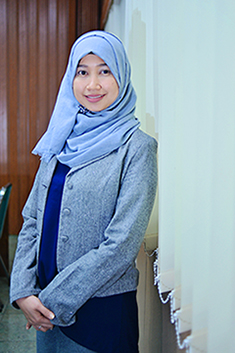Assessment of Antibiotic Use in ICU Patients with Pneumonia Using ATC/DDD as a Quantitative Analysis Method
Downloads
Background: Pneumonia is an infection of the lung tissue which is mainly caused by bacteria. High utilization and inappropriate use of antibiotics increase resistant bacteria, morbidity, mortality, and treatment cost. Quantitative evaluation becomes one of the indicators to assess the use of antibiotics which is one indicator of the quality of the antimicrobial resistance control program. Objective: This study aimed to evaluate the use of antibiotics an effort to increase the rationality of the use of antibiotics. Methods: This study was a retrospective observational study with a sampling method of time-limited sampling in Universitas Airlangga hospital from January until December 2019. Quantitatively using Anatomical Therapeutic Chemical (ATC)/Defined Daily Dose (DDD). Result: The samples obtained were 68 severe pneumonia patients who met the inclusion criteria. From the result of the study, there were 13 types of antibiotics used for pneumonia therapy, and the three most used were Levofloxacin, Ceftriaxone, and Meropenem, with a total of all antibiotics 73.64 DDD/100 patients-days. Most useful is parenteral Levofloxacin at 21.92 DDD/100 patient-days, Ceftriaxone at 20.45 DDD/100 patient-days and Meropenem at 14.29 DDD/100 patient-days. Conclusion: The DDD value indicates high antibiotic usage, but high antibiotic use does not imply unreasonable drug use, so we must undertake a qualitative review of antibiotic use.
Baldwin, C. M., Lyseng-Williamson, K. A., & Keam, S. J. (2008). Meropenem: A review of its use in the treatment of serious bacterial infections. Drugs, 68(6), 803–838. doi:10.2165/00003495-200868060-00006.
Ball, P. (2003). Efficacy and Safety of Levofloxacin in the Context of Other Contemporary Fluoroquinolones: A Review. Current Therapeutic Research - Clinical and Experimental, 64(9), 646–661. doi: 10.1016/j.curtheres.2003.11.003.
Barbara G., W., Joseph T., D., Terry L., S., & Cecily V., D. (2015). Respiratory Tract Infections, Lower. In Pharmacotherapy Handbook (pp. 405–417).
Cavallazzi, R., Furmanek, S., Arnold, F. W., Beavin, L. A., Wunderink, R. G., Niederman, M. S., & Ramirez, J. A. (2020). The Burden of Community-Acquired Pneumonia Requiring Admission to ICU in the United States. Chest, 158(3), 1008–1016. doi: 10.1016/j.chest.2020.03.051.
Cillóniz, C., Liapikou, A., Ceccato, A., & Torres, A. (2017). Risk factors for community-acquired pneumonia in adults. Minerva Pneumologica, 56(3), 206–216. doi: 10.23736/S0026-4954.17.01797-7.
Daniel H, D., & Lisa G, W. (2015). Chemotherapeutic Drugs. In Basic and Clinical Pharmacology (pp. 1497–1509).
Dahlan Z.(2014). Pneumonia. In: Buku Ajar Ilmu Penyakit Dalam Edisi Keenam.
Farida, Y., Trisna, A., & Nur, D. (2017). Study of Antibiotic Use on Pneumonia Patient in Surakarta Referral Hospital Studi Penggunaan Antibiotik Pada Pasien Pneumonia di Rumah Sakit Rujukan Daerah Surakarta. Journal of Pharmaceutical Science and Clinical Research, 02(01), 44–52. doi: 10.20961/jpscr.v2i01.5240.
Gayatri, A., & Bestari, L. (2017). Profiles of Antibiotic Usage In Pneumonia Patients At Internal Medicine Ward, Cipto Mangunkusumo Hospital. Clinical Therapeutics, 39(8), e21. doi: 10.1016/j.clinthera.2017.05.064.
Hasrianna, Annisa, N., Milanda, T., Pradipta, I. S., & Abdulah, R. (2015). Monitoring Use of Antibiotics with ATC/DDD and DU90% Method in Abepura Hospital Jayapura, Indonesia. Indonesian Journal of Clinical Pharmacy, 4(3), 218–225. doi: 10.15416/ijcp.2015.4.3.218.
Ilmi, T., Restyana, A., Kadir, M. B. A., & Yuniarto, P. F. (2020). Profile of Antibiotic Use and Germ Map in Pneumonia Patients in Pulmonary Space (Case Study at RSUD dr. Iskak. Tulungagung). Journal of Physics: Conference Series, 1569(3). doi: 10.1088/1742-6596/1569/3/032064.
Izadi, E., Afshan, G., Patel, R. P., Rao, V. M., Liew, K. Bin, Affandi, M. M. R. M. M., Kifli, N., Suleiman, A., Lee, K. S., Sarker, M. M. R., Zaidi, S. T., & Ming, L. C. (2019). Levofloxacin: Insights into antibiotic resistance and product quality. Frontiers in Pharmacology, 10(JULY), 1–7. doi: 10.3389/fphar.2019.00881
Kallen MC, Natsch S, Opmeer BC, Hulscher MEJL, Schouten JA, Prins JM, et al. (2019). How to measure quantitative antibiotic use to support antimicrobial stewardship in acute care hospitals: a retrospective observational study. Eur J Clin Microbiol Infect Dis, 38(2):347–55 doi: 10.1007/s10096-018-3434-0.
Kemenkes RI. (2011). Pedoman Pelayanan Kefarmasian Untuk Terapi Antibiotika Kementrian Kesehatan Republik Indonesia.
Kemenkes RI. (2015). PMK RI Nomor 8 Tahun 2015 Tentang Program Pengendalian Resistensi Antimikroba Di Rumah Sakit. 2015.
Mahmudah F, A. Sumiwi S, Hartini S. (2016). Study of the Use of Antibiotics with ATC/DDD System and DU 90% in Digestive Surgery in Hospital in Bandung. Indones J Clin Pharm, 5(4):293–8 doi : 10.15416/ijcp.2016.5.4.293.
Menéndez, R., Ferrando, D., Vallés, J. M., Martínez, E., & Perpiñá, M. (2001). Initial risk class and length of hospital stay in community-acquired pneumonia. European Respiratory Journal, 18(1), 151–156. doi: 10.1183/09031936.01.00090001.
Metlay, J. P., Waterer, G. W., Long, A. C., Anzueto, A., Brozek, J., Crothers, K., Cooley, L. A., Dean, N. C., Fine, M. J., Flanders, S. A., Griffin, M. R., Metersky, M. L., Musher, D. M., Restrepo, M. I., & Whitney, C. G. (2019). Diagnosis and treatment of adults with community-acquired pneumonia. American Journal of Respiratory and Critical Care Medicine, 200(7), E45–E67. doi: 10.1164/rccm.201908-1581ST.
Muhammad, O. R., & Mutmainah, N. (2018). Evaluasi Penggunaan Antibiotik dengan Metode ATC/DDD pada Pasien Pneumonia di Instalasi Rawat Inap RSUD Dr. Moewardi Tahun 2017.
Owens RC. (2008). Antimicrobial stewardship: concepts and strategies in the 21st century. Diagn Microbiol Infect Dis, 61(1):110–28, doi: 10.1016/j.diagmicrobio.2008.02.012.
Pahal, P., Rajasurya, V., & Sharma, S. (2021). Typical Bacterial Pneumonia. StatPearls.
PPDI. (2014). Pneumonia Komunitas : Pedoman Diagnosis & Penalataksanaan Di Indonesia.
PPDI.(2016) Pneumonia Nosokomial Pedoman Diagnosis & Penatalaksanaan Di Indonesia.
Pratama, N. Y. I., Suprapti, B., Ardhiansyah, A. O., & Shinta, D. W. (2019). Analisis Penggunaan Antibiotik pada Pasien Rawat Inap Bedah dengan Menggunakan Defined Daily Dose dan Drug Utilization 90% di Rumah Sakit Universitas Airlangga. Indonesian Journal of Clinical Pharmacy, 8(4), 256. doi: 10.15416/ijcp.2019.8.4.256.
Sari, A., & Safitri, I. (2016). Studi Penggunaan Antibiotik Pasien Pneumonia Anak Di RS. PKU Muhammadiyah Yogyakarta Dengan Metode Defined Daily Dose (DDD). Jurnal Ilmiah Ibnu Sina, 1(2), 151–162. doi: 10.36387/jiis.v1i2.38.
Scholze, K., Wenke, M., Schierholz, R., GroíŸ, U., Bader, O., Zimmermann, O., Lemmen, S., & Ortlepp, J. R. (2015). The Reduction in Antibiotic Use in Hospitals. Deutsches Aerzteblatt Online, 2011(December 2013). doi: 10.3238/arztebl.2015.0714.
Stamm, D. R., & Stankewicz, H. A. (2021). Atypical Bacterial Pneumonia. StatPearls. doi: 10.1007/s15006-020-1219-8.
Torres, A., Peetermans, W. E., Viegi, G., & Blasi, F. (2013). Risk factors for community-acquired pneumonia in adults in Europe: A literature review. Thorax, 68(11), 1057–1065. doi: 10.1136/thoraxjnl-2013-204282.
Urbánek, K., KoláÅ™, M., LoveÄková, Y., Strojil, J., & Å antavá, L. (2007). Influence of third-generation cephalosporin utilization on the occurrence of ESBL-positive Klebsiella pneumoniae strains. Journal of Clinical Pharmacy and Therapeutics, 32(4), 403–408. doi: 10.1111/j.1365-2710.2007.00836.x.
Waterer, Grant W. and Wunderink, R. G. (2005). Why Do Some Patients Get Severe Pneumonia? In M. S. Niederman (Ed.), Severe Pneumonia (Lung Biology In Health And Disease) (pp. 25–33). Taylor & Francis Group.
Wendy I., S., & Thomas J., M. (2013). Severe Community-Acquired Pneumonia. Criticalcare.Theclinics.Com, January. doi: 10.1016/j.ccc.2013.03.009.
Zaragoza R, Vidal-cortés P, Aguilar G, Borges M, Diaz E, Ferrer R, et al. (2020). Update of the treatment of nosocomial pneumonia in the ICU. Crit Care, 383:1–13 doi: 10.1186/s13054-020-03091-2.
Copyright (c) 2022 JURNAL FARMASI DAN ILMU KEFARMASIAN INDONESIA

This work is licensed under a Creative Commons Attribution-NonCommercial-ShareAlike 4.0 International License.
1. The copyright of this journal belongs to the Editorial Board and Journal Manager with the author's knowledge, while the moral right of the publication belong to the author.
2. The formal legal aspect of journal publication accessibility refers to the Creative Commons Attribution-Non-Commercial-Share Alike (CC BY-NC-SA), which implies that the publication can be used for non-commercial purposes in its original form.
3. Every publication (print/electronic) is open access for educational, research, and library purposes. In addition to the objectives mentioned above, the editorial board is not responsible for copyright infringement


.jpg)















